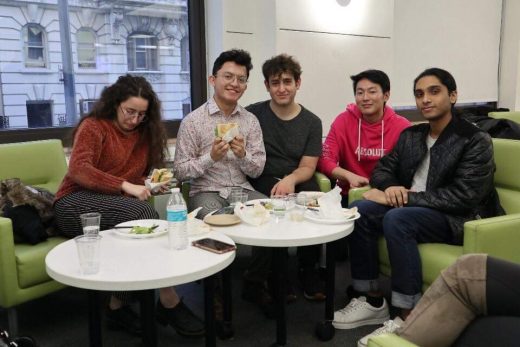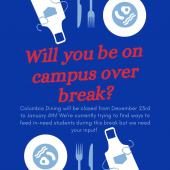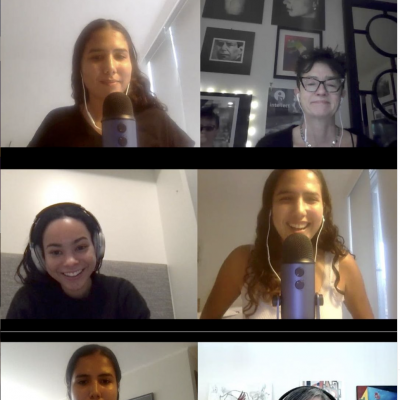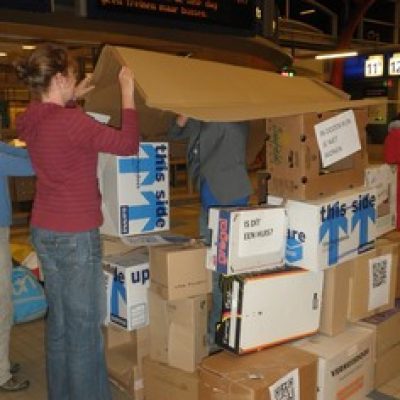Article
During her freshman year at Columbia University, Kwolanne Felix experienced a hate crime on campus that made national headlines. Following this experience, Kwolanne joined the student council to address issues of racism and inequality on campus. She soon realized that there was not a strong effort in the governing board to defend the rights of marginalized students.

Project Development
Confronted with this, Kwolanne built coalitions throughout the university by meeting diverse student leaders to understand their needs and priorities. She first created a task force seeking to support and collaborate with council members. Many joined the task force and led initiatives, which helped to gain an understanding of the campus landscape and advocacy through collaborating with initiatives and providing support in advocacy programs. From these efforts, they began to address issues including food insecurity, reproductive services and racial inequities. Even though finding a sustainable source of funding and a budget was difficult, the task force accomplished it through lobbying the student council. The student council committed a significant amount of its budget to fund future initiatives and campaigns

With the lack of a student-led governing body at Columbia University that focused on meeting the diverse needs of marginalized students, the task force was transitioned into an institutionally recognized committee. This group, known as the Inclusion and Diversity Committee, will sit on the executive board of the student council and directly speak to the administration to advocate and defend the needs of marginalized students. They directly work with other student groups and the administration to serve the needs of students through advocacy and community building.
Successes
One such initiative the committee has tackled is food insecurity among students forced to stay on campus during winter break. Students who stay have many reasons, some students cannot afford a plane ticket back home, are international students, and others are LGBTQ+ students who do not have a welcoming family. Regardless of the reason, students who must stay on campus during winter break face the same issue: finding food.

During extended breaks, Columbia closes its dining halls. By assuming that all students have the opportunity to return home for the holidays, the school ignores the needs of marginalized students. Along with advocacy and countless meetings with administration, the Inclusion and Diversity Committee created a winter meals initiative to resolve this issue. After receiving funding through the student council, the committee organized community meals for students. Within the first year, the initiative served nearly 1,000 meals and grew to 10,000 meals the following year.

Photo courtesy of Nathan Dumlao on Unsplash.
Challenges
While there have been successes, the creating and sustaining the task force was not without challenges. When creating this project, Kwolanne faced skepticism, limitations in funding, and trouble with advocacy. Many students who were not affected by institutional inequality often questioned the need for the committee. After consistent lobbying and coalition building, she was able to overcome this, and demonstrate the interest and need for the committee’s work. She also found that funding was difficult and was often reliant on outside resources. This is why the task force merged under the student council: to receive a consistent and large funding source.
There was also limited direct interface with administrators when advocating for marginalized students. When transitioning the task force into a committee, Kwolanne ensured that committee members would sit alongside the student body president as executive members. This grants them direct access to administrators when advocating and crafting policy.
The committee will juggle the diverse needs of students and work to build an inclusive coalition with student leaders and other organizations.
Future prospects
With these big changes underway, the committee will gain its bearing as an institutional part of the student government, create initiatives and take advantage of new funding opportunities. They will also juggle the diverse needs of students and work to build an inclusive coalition with student leaders and other organizations. Others can join meetings and support initiatives of the committee through attendance and engagement. If there are concerns around issues on campus, they can collaborate with the Committee to create advocacy projects.
So far, the project has assisted approximately 9,000 students, with approximately 40,000 students, faculty, and staff at the university able to engage in the project.
You can read more about this project on the Columbia Spectator website.




